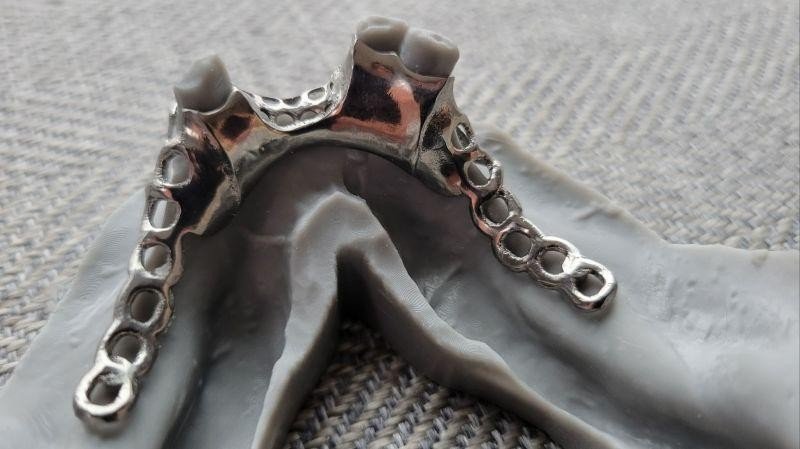- Your cart is empty Browse Shop
Case Details
Case Study : Metal 3D Printing Achieves Lightweight Manufacturing in Aerospace Industry
Sector: Aerospace Industry
Category: EPlus
Download Case Details
Download a detailed report on this case

Metal 3D Printing for Advanced Dental Implants
Bone structure is porous and anisotropic, meaning its density varies along different axes. This natural porosity plays a crucial role in bone growth and cell proliferation, as the size and shape of pores influence permeability and mechanical properties. By optimizing these parameters, dental implants can enhance osseointegration and biomechanical performance.
Limitations of Traditional Dental Implants
Conventional titanium dental implants are typically machined from solid rods and later surface-treated to encourage bone integration. However, this process has limitations:
- Limited control over porosity and surface
- Complex and time-consuming post-
- Restricted design freedom for patient-specific implants. Metal 3D Printing – A Game Changer for Dental Implants
With metal 3D printing, manufacturers can directly print complex porous geometries, eliminating many post-processing steps and significantly reducing production time. This method enables:
- Customizable pore size, shape, and distribution to mimic natural bone
Enhanced osseointegration, leading to better cell attachment, proliferation, and mineralization.
- High design flexibility, allowing the fabrication of implants with patient-specific dimensions and improved biomechanics.
- Better mechanical performance, as 3D-printed titanium shows improved plastic deformation under tensile and bending tests compared to milled samples.
The Future of 3D-Printed Dental Solutions
Eplus3D collaborates with leading dental laboratories and companies to revolutionize digital dentistry. By integrating 3D printing technology, the industry can achieve a
streamlined workflow, enhanced patient outcomes, and a more efficient production process.
